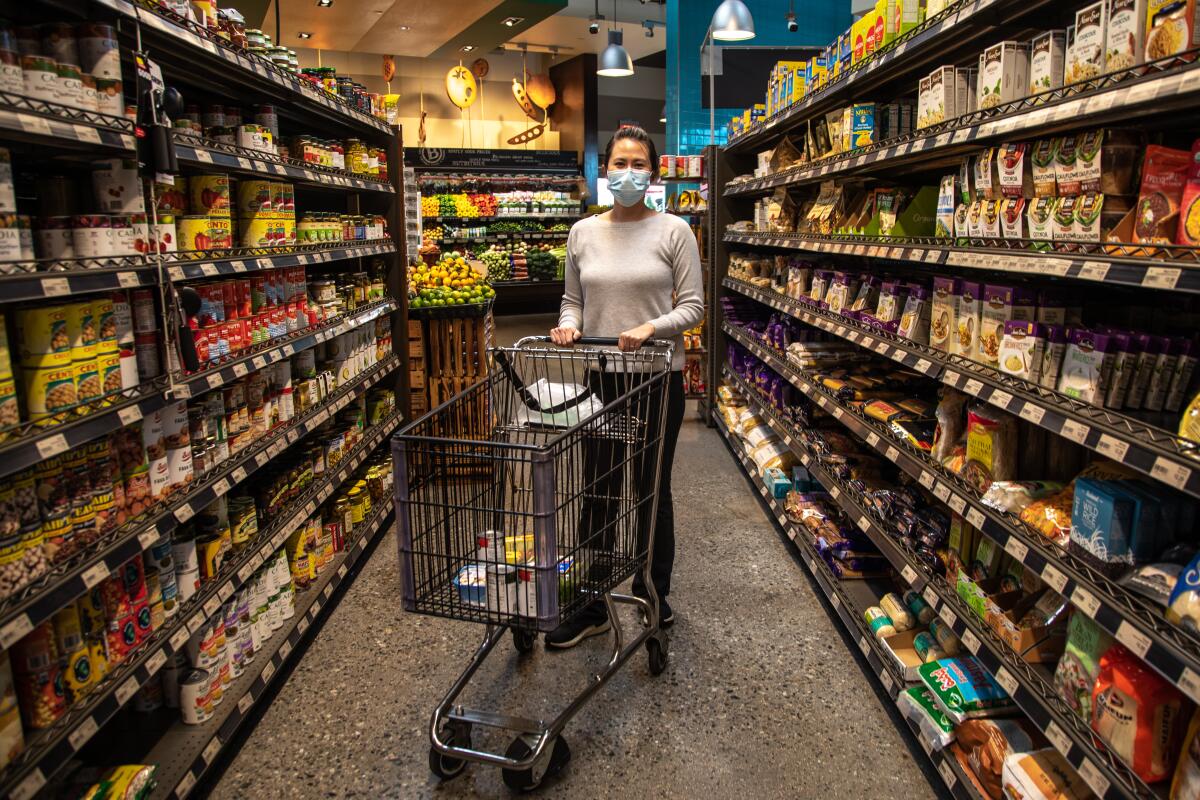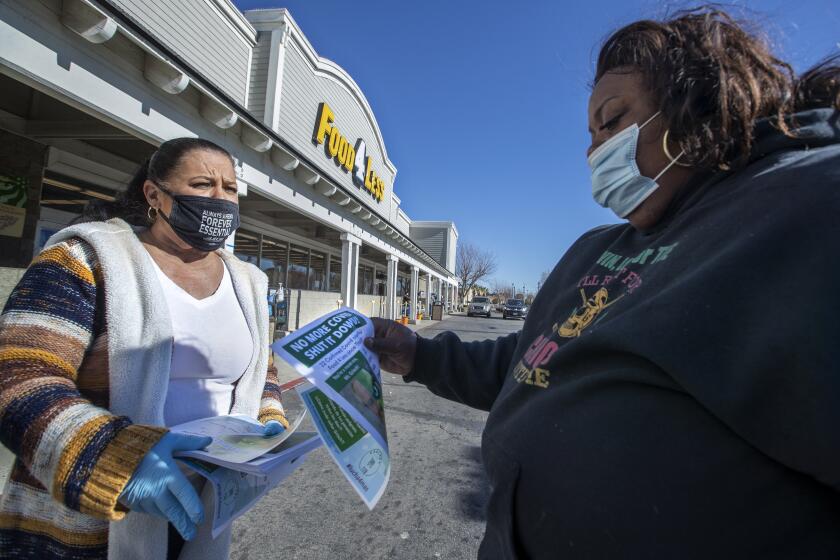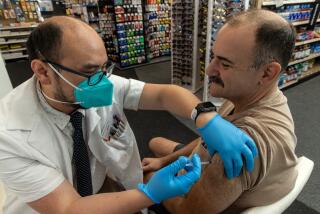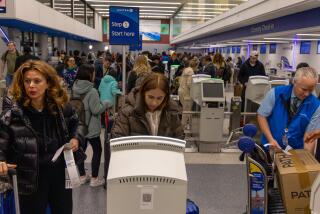With coronavirus spreading in L.A. County supermarkets, here are some tips for shopping safely

With COVID-19 spreading with relentless speed across Los Angeles County, supermarkets and grocery stores are being hard hit.
The Times chronicled the rising infection levels at markets.
Grocery stores and other essential businesses have been hit hard by the coronavirus surge, further straining services that must stay open despite the stay-at-home order.
Dr. Jeffrey Gunzenhauser, Los Angeles County chief medical officer, recommended consolidating trips to businesses, perhaps visiting the grocery store every other week instead of weekly, if possible. People should also be prepared to leave and return another time if the store is too crowded, lines are long or shoppers aren’t wearing masks.
“You should have a Plan A and a Plan B,” he said. “If things are operating as they should, I’m comfortable with that — people shouldn’t have an irrational fear that just walking in the building is a problem.”
He pointed out that customers are more likely to be in close contact with other shoppers than with employees, so community prevalence may be a better indicator of risk than whether a store recently suffered an outbreak among staff. Currently, 1 in 80 people in L.A. County are thought to be infectious with the coronavirus.
UCLA epidemiology professor Shira Shafir reiterated that people entering stores should wear masks, keep six feet from others, plan to go when stores might be less crowded and spend as little time inside as possible. The longer a person spends in close contact with an infected person, the more likely they are to catch the virus — even if both are wearing masks.
“There is no safe activity that involves being within six feet of another person that you do not live with,” she said. “I know this is the time when a lot of people might want to linger and browse and be out shopping, particularly when it comes to Christmas gifts, but we really want people to be as expedient and efficient as possible.”
The Centers for Disease Control and Prevention has issued guidelines for shopping as safely as possible. The agency recommends online shopping when possible. But here are some other CDC tips:
General
- Wear a mask in public settings and when around people who don’t live in your household, especially when social distancing is difficult.
- When you do have to visit in person, go during hours when fewer people will be there (for example, early morning or late night).
- If you are at higher risk for severe illness, find out if the store has special hours for people at higher risk. If they do, try to shop during those hours.
- If you normally bring your own reusable shopping bags, ensure they are cleaned before each use. Some locations have temporarily banned the use of reusable shopping bags during the COVID-19 pandemic, so check your state, local, store or market policies before bringing reusable bags.
- Disinfect the shopping cart, using disinfecting wipes if available.
- Do not touch your eyes, nose or mouth with unwashed hands.
- Stay at least six feet away from others while shopping and in lines.
- Use marked entry or exit points and follow any directional signs or floor markings designed to keep people at least six feet apart.
- Touch only products that you plan to purchase, if possible.
- Consider not consuming any sample or purchase food or drink items from self-service stations.
- If possible, use touchless payment (pay without touching money, a card or a keypad). If you must handle money, a card, or use a keypad, use hand sanitizer right after paying.
Practice hand hygiene
- Before entering and after exiting the grocery store or market, use a hand sanitizer that contains at least 60% alcohol.
- When you get home, and before preparing or eating food, wash your hands with soap and water for at least 20 seconds.
Unpack safely at home
- Currently, the risk of infection from SARS-CoV-2, the virus that causes COVID-19, from food products, food packaging or bags is thought to be low. However, it is always important to follow good food safety practices.
- When unpacking groceries, refrigerate or freeze meat, poultry, eggs, seafood, and other perishables within two hours of purchasing.
- Do not use disinfectants designed for hard surfaces, such as bleach or ammonia, on food packaged in cardboard or plastic wrap.
- After unpacking groceries, wash your hands with soap and water for at least 20 seconds. If soap and water are not available, use a hand sanitizer that contains at least 60% alcohol.
- Regularly clean and disinfect kitchen counters using a commercially available disinfectant product or a DIY disinfecting solution.
More resources
The California Department of Public Health has also issued guidance to grocery stores about how to prevent COVID-19 spread.
This is the L.A. County Public Health order related to grocery store operations.
More to Read
Sign up for Essential California
The most important California stories and recommendations in your inbox every morning.
You may occasionally receive promotional content from the Los Angeles Times.












